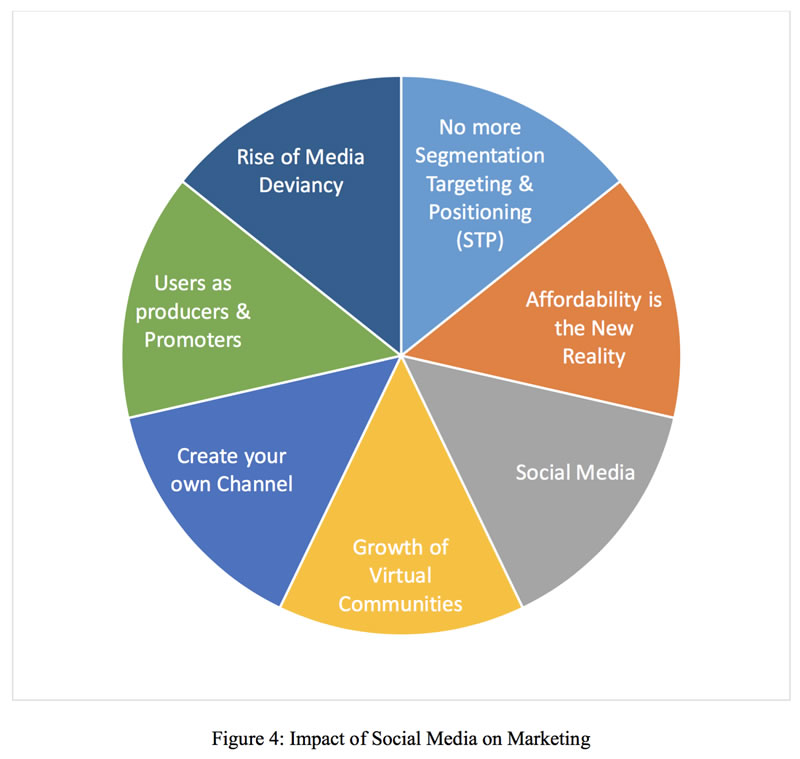This paper attempts to demonstrate that history of consumer behavior with respect to research methodology, substantive knowledge, and the influence of external disciplines has been highly intertwined with the history of marketing thought. It describes tire classical schools, tire managerial schools and the behavioral schools of marketing and examines their influence in shaping consumer behavior. Finally, it attempts to forecast the new emerging trends in consumer behavior as a consequence of the emerging adaptive marketing school of thought.
Introduction
History of consumer behavior seems to be highly intertwined with the history of marketing thought. The purpose of this paper is to trace the historical dependence and allegiance of consumer behavior on the discipline and practice of marketing. It then attempts to – forecast emerging trends in consumer behavior research and theory as a consequence of new and emerging schools of marketing thought.
Over the years, marketing has shifted its reliance on other disciplines as well as its focus of understanding. for example, the classical schools of marketing thought relied on the social sciences such as economics, sociology and anthropology and focused oil aggregate market behavior. This gave way to the managerial schools of marketing thought in which tire focus of attention and understanding shifted to the individual customers while social sciences disciplines continued to dominate marketing thinking. Eventually, marketing kept its focus on individual customers but began to borrow more and more from the behavioral sciences. This resulted in what I will call as the behavioral schools of marketing thought. More recently , marketing has begun to shift its attention away from the individual customers and concentrate oil the markets. In tire process, it is also relying less on the behavioral sciences and more on tire traditional social sciences. We shall call this emerging trend as adaptive schools of marketing thought.
It appears that each marketing era lids motivated specific types of consumer behavior research, and thereby shape its history with respect L o t b e substantive body of knowledge, research methodology as well as theory development. Figure 1 summarizes the parallels between marketing and consumer behavior. The rest of the paper will enumerate elements of each of the four phases of marketing thought and its impact on consumer behavior.
Classical Marketing and Consumer Behavior
Emergence of the marketing thought in tire early nineteen hundreds is eloquently documented by Bartels (1962). The Classical schools of marketing are identified as tire commodity school, the functional School, and the institutional School.
The commodity school focused on the objects of market transactions, and generated the specialty – shopping – convenience goods trichotany which is still popular in marketing practice. The functional school focused on the activities inherent in market transactions and generated a classification of functions such as grading, assortment and physical distribution. Finally, tire institutional school focused oil the agents of markets transactions such as wholesalers and retailers which resulted ill channels of distribution and value added services provided by tire middlemen. (Sheth, Gardner and Garrett 1985).
The classical schools of marketing thought were influenced by concepts of demand theory in microeconomics, spatial markets and trading areas in economic geography, and by metro vs. nonmetro market definitions provided by economic anthropology.
This focus oil the aggregate market behavior and reliance on microeconomics, economic geography and economic anthropology resulted in a similar focus and reliance in consumer behavior. Thus, early history of consumer behavior generated theories, research methods, and substantive knowledge in such areas as Consumption economics (necessities vs. luxuries, household budgets, conspicuous consumption), retail partonage (retail gravitation, store patronage and wheel of retailing), and in self-service concepts.
There also emerged distinct research traditions. For example, case studies, market surveys, and tire use of census data became more prevalent as methods of understanding consumer behavior.
Managerial Marketing and Consumer Behavior
‘Fire classical schools of marketing thought with their emphasis oil descriptive market behavior gave way to the managerial schools of thought with their emphasis on controlling the market behavior.
The managerial schools of marketing thought emerged in the early fifties soon after World War If and tire consequent unprecedented economic boom partly fueled up new product introductions. It generated such concepts as the four Ps of marketing, marketing mix, product differentiation and market segmentation.
Tire managerial schools of marketing thought still relied on the social sciences but borrowed the more recent concepts and methodologies. For example, it eagerly borrowed Concepts and methods of the emerging field of managerial economics which shifted focus away from demand theory to the theory of the firm, and especially the concepts of monopolistic competition and product differentiation. Similarly, it latched onto the diffusion of innovations traditions generated in economic anthropology.
Finally, it also borrowed heavily from sociology the new and exciting research traditions related to social stratification and household structures.
As expected, this created a shift in consumer behavior. Rather than focusing on the aggregate market behavior, it became fashionable to study the individual Customers in the market place. however, consumer behavior also remained faithful to the disciplines at social sciences. Th i s resulted in such substantive knowledge as opinion leadership, brand loyalty, and demographic segmentation based on socioeconomic status (SES) index and life cycle stages of households.
Along with the substantive knowledge, research methodology also shifted mostly due to the focus on individual customers. For example, consumer behavior began to rely on longitudinal panel, ,attempted to use operations research techniques of stochastic processes to measure brand loyalty, and apply econometric modeling Lo measure impact at personal attributes at individual customers art their buying behavior. Finally, segmentation research became fashionable.
Behavioral Marketing and Consumer Behavior
As the focus of research shifted to individual customers in the market place, marketing discipline discovered that, behavioral sciences could contribute more to the understanding at individuals than the social sciences.
This resulted in search for other disciplines especially various branches at psychology as more relevant and useful. for example , economic psychology with its emphasis on customer expectations, clinical psychology with its emphasis on nonfunctional value in products and services, organizational psychology with its emphasis on power and conflict among organizations, and social psychology with, its emphasis on cognitive consistency as the driver of human behavior became more exciting and interesting areas of marketing. It was this perception and flat necessarily the reality which was considered as the driver of customer competition, and channel behavior.
The behavioral schools of marketing therefore, encouraged a similar shift in understanding the psychology of the customers. It became fashionable to assert that consumers are not logically ‘but psychologically driven in their buying behavior.
Consumer behavior began to borrow both concepts and methods from clinical, social and organizational psychology resulting in numerous theories of buying behavior, attitude research, family and organizational buying behavior as well as psychographics and life style research.
Along with the substantive knowledge, consumer behavior also borrowed the research methods of t h e behavioral sciences. These included motivation research (focused group interviews, projective techniques), laboratory experiments especially with physiological behavioral measures such as pupil dilation and galvanic skin tests, and cross-sectional mail or telephone surveys appropriate for attitude and psychographic research.
It is important to note that it is the behavioral schools of marketing which has been largely responsible for increasing the Scientific sophistication of consumer behavior With respect to both theory development and theory testing procedures. Indeed, consumer behavior Matured significantly enough to assert its independence from marketing, and started the movement t a establish its own association (ACR) and its own journals JCR).
Adaptive Marketing and Consumer Behavior
More recently, the marketing discipline is shifting its focus towards the market behavior by focusing on the environmental opportunities and threats generated by technology, regulation and global competition.
Thus has resulted in the emergence of the adaptive marketing concept in which it is argued that it is better to bend the organization to fit the environmental realities rather than bending the environment to tit the organization. The adaptive schools of marketing thought are borrowing concepts from business strategy, environmental scanning and stakeholder analysis as well as the social sciences appropriate for global markets.
It is my contention that consumer behavior will be on the horns of dilemma far the first time . On the one hand, as an integral part of marketing, it will attempt to follow the marketing discipline’s needs. On the other hand, it will hesitate to give up the scientific traditions learnt from the behavioral sciences. It is very likely that the traditional journals and conferences will perpetuate the science of consumer behavior while new journals and associations will be created to provide impetus toward marketing oriented research. Witness the emergence at new journal such as Journal of Consumer Marketing.
What are the likely areas of understanding and research as a consequence of the adaptive schools of marketing thought? At least, the following three areas come to mind.
First, as markets become global, it will become more and more important for marketing Managers to understand and cope with cross-cultural or international consumer behavior. Therefore, we should expect global consumer behavior research and theory to became an emerging area of consumer behavior.
Second, as markets become more mature, understanding competitive behavior becomes more important. This should result in focusing on comparative Customer behavior to pinpoint relative perceptions and behaviors of the market rather than absolute perceptions and behaviors.
Finally, companies are likely to utilize more and more behavior modification strategies and less and less persuasion strategies in order to cope with rapidly changing competition and technology. This should result in shifting the focus of consumer behavior away from perceptions and cognitions and toward behaviors of Customers and markets.
Summary
This paper has tried to show the dependence of consumer behavior on marketing. It has demonstrated both at both consumer behavior theory and research methodology have been heavily influenced by the changing traditions in the marketing discipline. However, as marketing shifts one more time in its efforts to mature as a discipline, it is not certain that consumer behavior will automatically follow marketing. it is likely that consumer behavior may become bifurcated in the process, and the science of consumer behavior may emergence as a standalone discipline while marketing continues to understand consumer behavior from its own perspective.
References
Bastels, Robert (1962), The Development of Marketing Thought, Homewood: Richard D. Irwin Inc.
Sheth, Jagdish N., David M. Gardner, and Dennis Garrett (1985), Theories of Marketing, New York: Wiley & Sons (in press).





